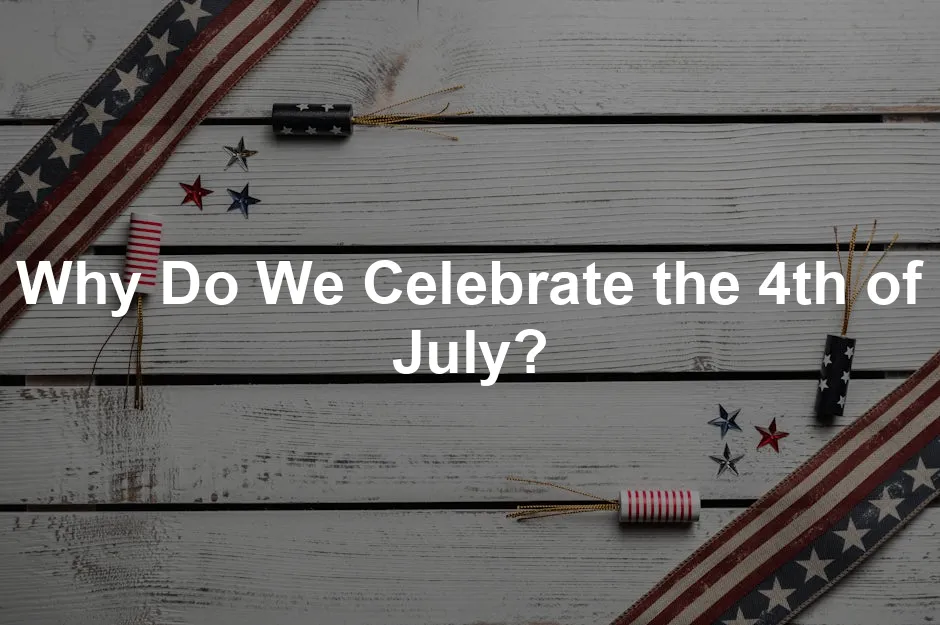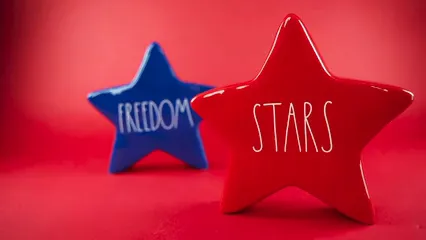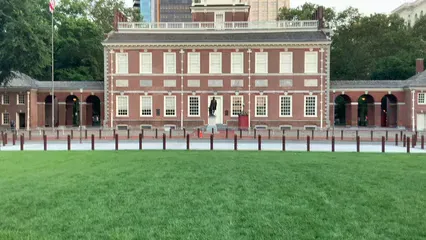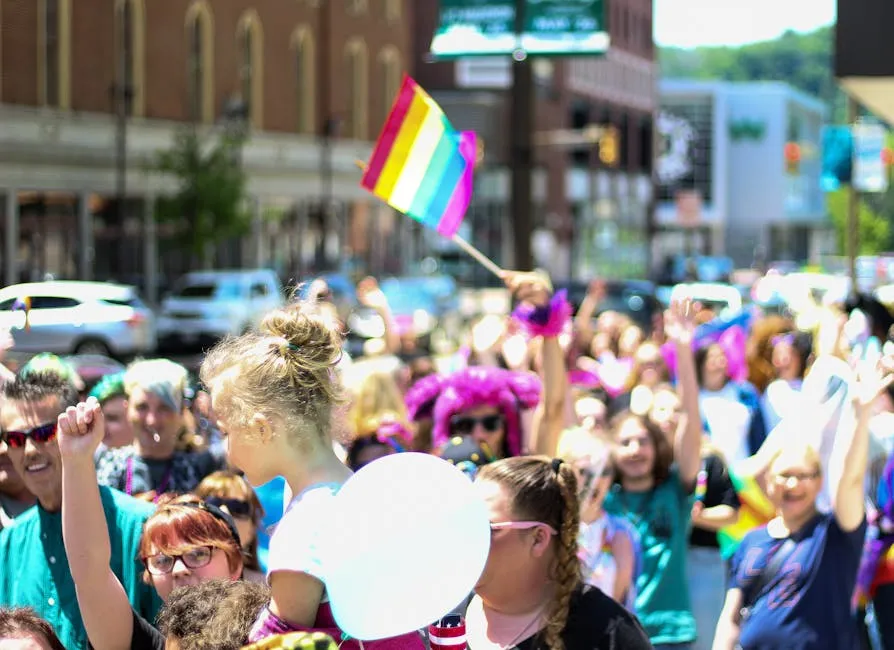
Why Do We Celebrate the 4th of July?
Introduction
The 4th of July is a significant national holiday in the United States. This day commemorates the adoption of the Declaration of Independence in 1776. It marks a pivotal moment in American history, symbolizing freedom and unity. Let’s explore the customs, history, and meaning behind this cherished celebration.
Speaking of celebrations, it’s not a real Independence Day without some vibrant American flag decorations! These little beauties can transform your backyard into a patriotic paradise.

Summary and Overview
The journey to the 4th of July began with growing discontent among the American colonies in the 18th century. Tensions escalated, leading to the American Revolution. On July 2, 1776, the Continental Congress voted for independence, and two days later, they adopted the Declaration of Independence, primarily authored by Thomas Jefferson. This document boldly declared the colonies’ separation from Great Britain.
Initially, the holiday was celebrated with public readings of the Declaration, parades, and fireworks. Over the years, these celebrations evolved significantly. By the 19th century, Independence Day had become a widespread patriotic tradition, encompassing various events, including barbecues and community gatherings. Today, the 4th of July serves as a powerful reminder of American identity, resilience, and patriotism.
And what’s a barbecue without a great BBQ grill set? Make sure your grilling game is on point this year!

Historical Context
The Road to Independence
The road to independence was paved with significant events. The push for freedom began in April 1775 with the first battles of the American Revolution. Initially, many colonists were hesitant about complete separation from Britain. However, by mid-1776, the tides changed, fueled by revolutionary sentiments and the influential pamphlet “Common Sense” by Thomas Paine.
On June 7, 1776, Richard Henry Lee proposed independence, leading to heated debates in the Continental Congress. After much deliberation, Congress voted for independence on July 2. Key figures like Thomas Jefferson and John Adams played crucial roles during this period. Jefferson drafted the Declaration, while Adams fervently advocated for independence.
A significant percentage of colonists supported the independence movement, with around 75% favoring the break from British rule. This growing consensus fueled the urgency of declaring independence. As British forces intensified their military presence, the colonies united to assert their rights and freedoms. The adoption of the Declaration on July 4, 1776, marked a turning point in American history, setting the stage for the birth of a new nation.

Adoption of the Declaration of Independence
On July 4, 1776, a historic moment unfolded. The Continental Congress adopted the Declaration of Independence, officially declaring the thirteen colonies free from British rule. This crucial document was primarily drafted by Thomas Jefferson, with contributions from John Adams, Benjamin Franklin, Roger Sherman, and Robert Livingston.
The Declaration emphasizes key themes like equality and rights. It boldly states that “all men are created equal,” a phrase that still resonates today. Interestingly, the date of adoption is often confused with the actual signing. While July 4 is celebrated, the formal signing did not occur until August 2, 1776, when most of the 56 delegates put their names to the document.
The Continental Congress played a pivotal role in this process. They navigated heated debates and revisions before reaching consensus. The adoption symbolized a collective desire for freedom, fueling the American Revolutionary spirit. This date now stands as a cornerstone of American identity, marking the birth of a new nation grounded in the ideals of liberty and justice.

To celebrate this freedom, why not deck out your picnic with some stylish red, white, and blue tableware? Because nothing says “I love my country” quite like themed plates and cups!
Federal Holiday Status
The 4th of July became a federal holiday in 1870. Congress recognized its importance, marking the adoption of the Declaration of Independence. This pivotal moment in 1776 was celebrated annually, but it took nearly a century for it to gain official status.
Over time, the significance of Independence Day evolved. Initially, celebrations were local and often included public readings of the Declaration. As the nation grew, so did the festivities. By the 19th century, fireworks, parades, and community gatherings became common.
Notable events also took place on July 4. For instance, in 1826, both John Adams and Thomas Jefferson passed away on the same day. This coincidence added a layer of historical significance to the holiday. Today, the 4th of July stands as a symbol of national pride and unity, celebrated across the country with various traditions and events.

Customs and Traditions
Fireworks and Their Significance
Fireworks on the 4th of July are a beloved tradition. John Adams famously predicted that fireworks would mark the anniversary of American independence. His vision came to life during the first organized celebration in 1777 in Philadelphia, where 13 rockets honored the original colonies.
Modern fireworks displays celebrate this historical significance. Cities across the U.S. host thousands of shows each year, with around 14,000 public displays reported nationwide. These colorful explosions symbolize freedom and national pride, captivating audiences of all ages. Fireworks also create a sense of unity, bringing communities together under the starry sky. Each burst of light serves as a joyful reminder of the nation’s independence and the ideals it represents.

And let’s not forget to get your hands on a fireworks kit to light up your night! Just be sure to follow safety precautions—no one wants a trip to the ER on Independence Day!
Parades and Community Events
Parades play a central role in celebrating the 4th of July. They bring communities together, showcasing local pride and patriotism. Across the United States, you’ll find a variety of parades featuring floats, marching bands, and community groups.
Some parades have unique themes, while others highlight local history. For example, towns might celebrate with floats that represent their heritage or important local figures. Participants often dress in red, white, and blue, creating a festive atmosphere.
Local customs vary widely. In some places, parades feature quirky contests or performances by local schools. These traditions foster community involvement, encouraging residents to unite for a common cause.
Every year, thousands of parades take place nationwide, with an estimated 15,000 events celebrating Independence Day. This number shows the significance of parades in bringing people together, creating lasting memories, and honoring the spirit of the holiday.

Food and Festivities
The 4th of July is synonymous with delicious food and family gatherings. Traditional meals often include hot dogs, hamburgers, and corn on the cob. These favorites create a sense of nostalgia and belonging, making every bite special.
Family barbecues are a highlight of Independence Day celebrations. It’s a time for loved ones to gather, share stories, and enjoy each other’s company. The aroma of grilled food fills the air, enhancing the festive mood.
Over the years, holiday meals have evolved. While barbecues remain staples, many families now incorporate diverse cuisines reflecting their backgrounds. Interestingly, Americans consume about 150 million hot dogs on this day alone, showcasing the holiday’s culinary significance.

To take your grilling to the next level, you may want to consider a hot dog grilling basket. Perfect for keeping those franks from falling through the cracks!
Food brings people together, turning simple meals into cherished traditions. Each gathering reflects the values of unity and gratitude that the 4th of July embodies, making it a day filled with joy, laughter, and connection.
FAQs
What is the origin of Independence Day?
Independence Day celebrates the adoption of the Declaration of Independence. This pivotal document declared the colonies’ separation from Great Britain on July 4, 1776. It’s a reminder of the values of freedom and democracy.
Why do we celebrate with fireworks?
Fireworks symbolize national pride and joy. The tradition started in 1777, with displays honoring the original 13 colonies. They create a festive atmosphere and unite communities in celebration.
Who wrote the Declaration of Independence?
The Declaration was primarily drafted by Thomas Jefferson. Key figures like John Adams, Benjamin Franklin, Roger Sherman, and Robert Livingston also contributed. Their collaborative efforts shaped this historic document.
How has the celebration of the 4th of July changed over the years?
Initially, celebrations were modest, focusing on public readings and speeches. Over time, they grew into large-scale events with fireworks and parades. Today, it’s a major holiday filled with diverse traditions.
What are some popular traditions on the 4th of July?
Common traditions include fireworks displays, parades, barbecues, and family gatherings. Many decorate with red, white, and blue, showcasing national pride. Each tradition reflects a celebration of freedom and community spirit.
Please let us know what you think about our content by leaving a comment down below!
Thank you for reading till here 🙂
Understanding the implications of historical events can provide insight into modern governance. For a deeper dive, check out this article on why does trump have immunity.
All images from Pexels




